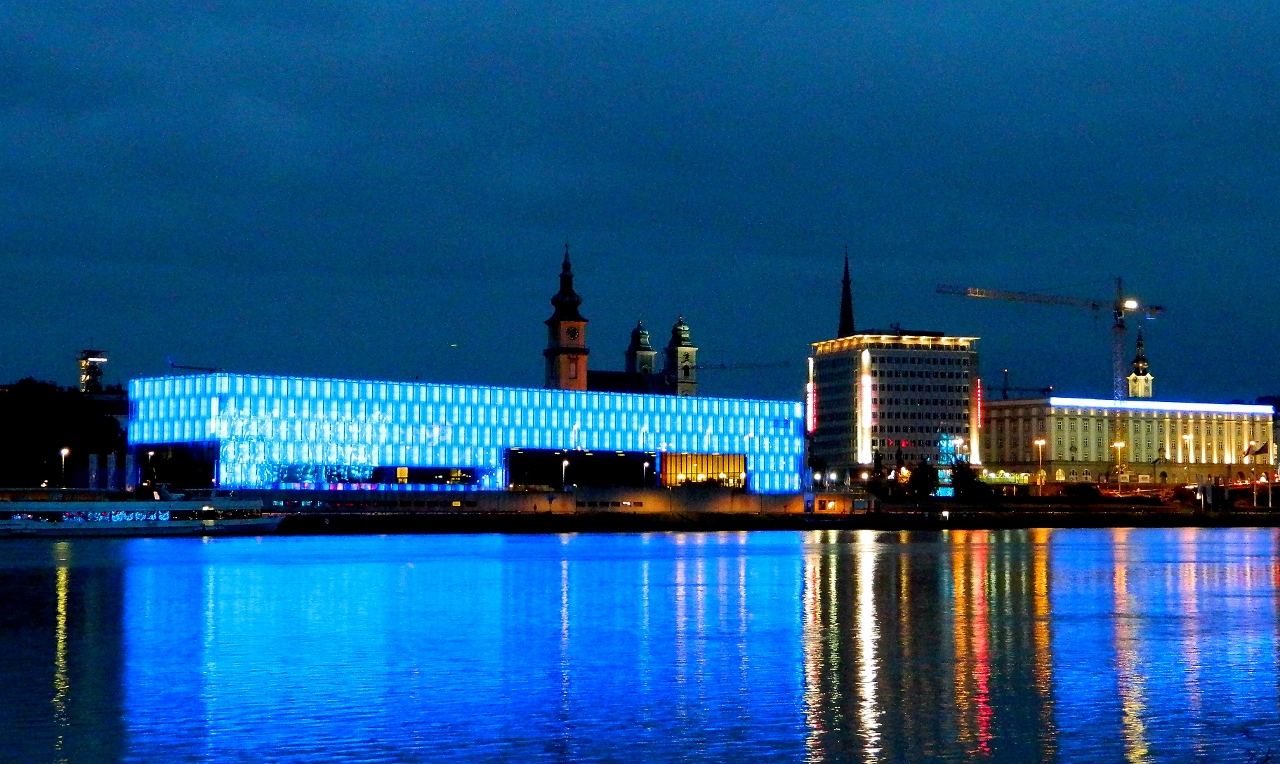We didn’t know it but Monday was to be a big day. I was up and out ready to greet the bakery van arriving at precisely the predicted 7.45am. After breakfasting, packing up and getting on the road our last tasks in Germany were to shop for food (cheaper than in neighbouring Austria) and to off-load the ‘pfand’. Pfand is the deposit fee on glass and plastic bottles which is an extremely effective way of ensuring recycling on an industrial scale. We visited two supermarkets and got ourselves five euros in return for our ‘pfand’ to spend on shopping.
Fuel was a very reasonably priced 1.07 euros a litre across the border so we topped up Bertha in Austria and avoided the need to pay for a vignette. This is a toll system that allows you to drive on motorways and fast roads or ‘schnellstrasse’ for a one off payment against a set number of days. Our destination at Linz was on the scenic 130 road alongside the Donau so we could avoid paying the fee until we needed to use the motorway to get to Vienna.

It was a mercifully cool but dull day, which did not dampen the loveliness of the views alongside the wide and curving river. At times the road was just a foot from its shallow banks so it felt as though we were cruising along the waters that swung majestically through a green and verdant valley.
We veered away briefly as Bertha chugged up and over a steep wooded gorge then re-joined the waters at a pretty hamlet of farmhouses with wooden balconies festooned with window baskets of colourful and bright red and pink geraniums.
Our new sat-nav ‘snopper’ got us hopelessly tangled upon arriving in Linz. After crossing the river several times and narrowly missing a tram, ‘snopper’ was thrown into the glove compartment in disgrace and we found our own way to the town’s large free parking aire at the riverside opposite the moorings of the river cruisers, and the illuminated gigantic modern art centre.

Linz is now a modern industrial city based on steel and chemical works on the Danube, which has grown up around a small and graceful historic centre. My misreading of a walking tour map unfortunately ensured we saw everything in reverse and with initially some confusion. However the centre is compact enough to walk around more than once so we spent the afternoon admiring the elegant 17th and 18th century buildings, Gothic and baroque churches and a beautiful renaissance palace, now home to the City Council.
We lingered outside the house where Mozart composed his ‘Linz Symphony’ in just four days, and listened to sections of the opening score from a wall mounted speaker. Linz was home to many musical giants of Austria including the composer Anton Bruchner who was the principle organist in the city’s enormous baroque cathedral. At one point in its history, Linz was proud to be known as ‘the Fuhrer’s city’ following Hitler’s annexation of Austria into Germany. As his former hometown Linz featured heavily in Hitler’s plans for architectural development and it was to the city that much of the stone quarried in appalling circumstances from nearby Mauthausen was taken.
The wide main square is lined with gracious merchant houses, now home to five star hotels and eateries. The central fountain is a curious helter-skelter of tumbling angels and allegorical figures, sculpted in the 1800s in thanks for the town’s survival of a Turkish invasion, bout of plague and several devastating fires.
We climbed up to the impressive fortified Schloss, now the official museum of the city and walked along the walls enjoying views back across the river to the residential suburbs and downstream to the colossal steel plant. Tomorrow we would learn the dark history of the founding of those works.
At the highest point of the bluff on which the Schloss was built is reputedly Austria’s oldest church. Small and unassuming from the outside the Roman church of St Martin has been lovingly kept and restored. You can enter the heavy wooden doors but have to stand behind a thick glass wall to peer into the simple hall inside. Portions of 1,200 year old frescoes are faintly visible on the stucco plastered walls, and the high narrow windows are arched thickly in white stone. Where the plaster has come away from the walls you can see the building stones of the church, thought to be from the site’s original Roman camp. The church is simple and lovely.
Back down in the cobbled ‘altstadt’ we admired the curious household and design wares in ‘concept shops’ before meandering along the river to the vast Kunsthaus. None of the modern art exhibitions appealed so we sat for a while next to the water watching more vans arrive at the aire across the river, and the touring hotel cruisers dock for the evening.
After dark the art gallery lit up in a changing spectrum of colours and thumping music bellowed out of a local bar. It was a noisy but safe night and we tucked into a well-deserved and hearty meal of leberkase (a kind of sausage loaf), oven chips and onion gravy. It had been a big day!



